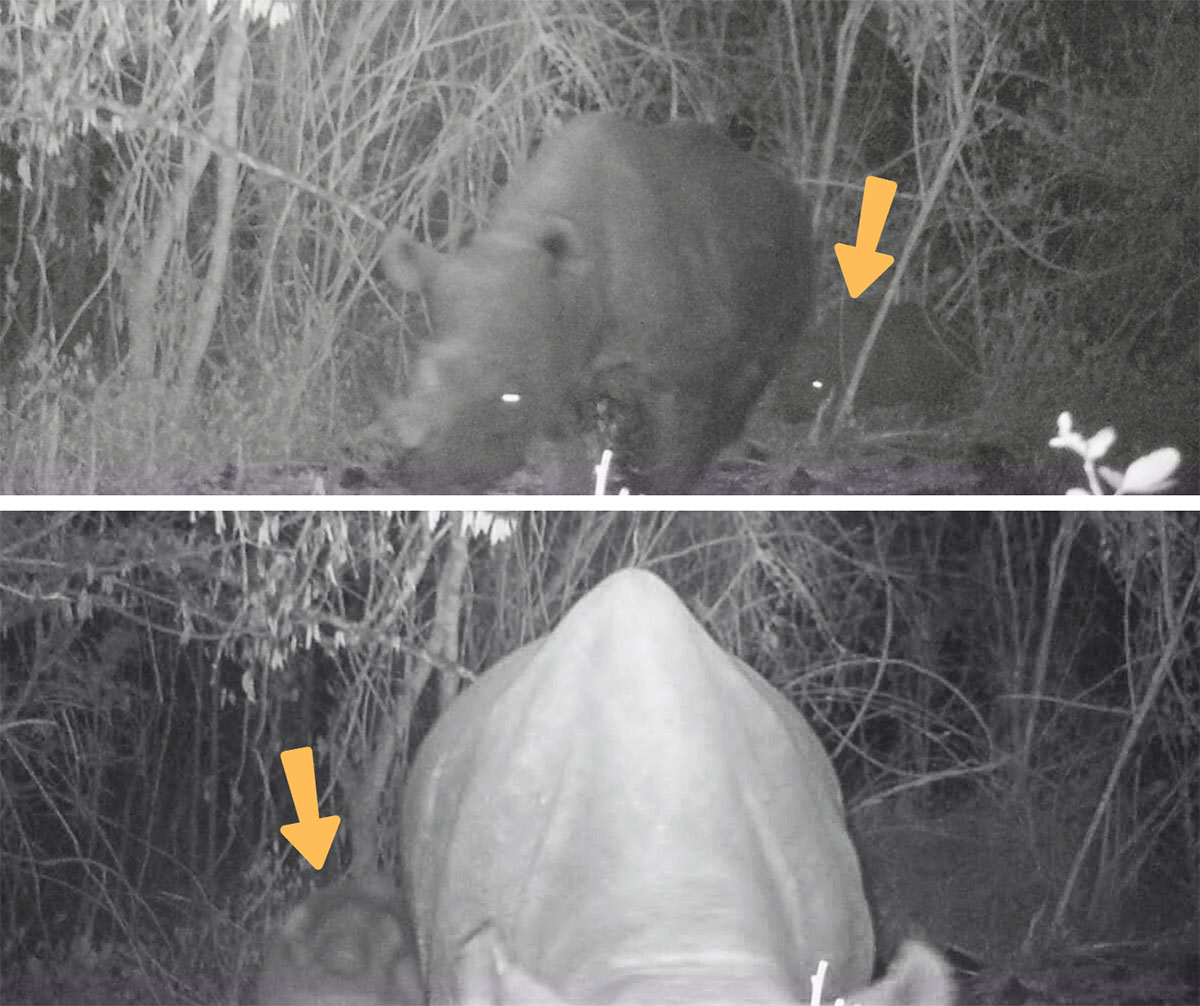 The rangers stared at the ground in disbelief. They decided that they must be imagining things, as tracks in coarse soils can be easy to misinterpret. The unit walked on, but with each step the excitement built.
The rangers stared at the ground in disbelief. They decided that they must be imagining things, as tracks in coarse soils can be easy to misinterpret. The unit walked on, but with each step the excitement built.
Alongside one clear set of adult rhino tracks were smaller scuffs. Very small. Eventually there could be no more doubt: this was not one rhino but two. And number two was definitely a baby.
The ranger teams immediately set out to verify the newest addition on camera. Within a month, they were able to get these pictures of the tiny baby rhino alive and well.
This calf is a major event. The Eastern black rhino is critically endangered. There are estimated to be fewer than 1,000 remaining.
There are only 7 known individuals that live in the rugged and inaccessible area that we protect in close coordination with our partners at the Kenya Wildlife Service. They are some of the last wild and unfenced black rhinos in East Africa and the remnants of a population that we intend to re-establish as a stronghold for the species in Kenya.
Thanks to the rangers, we haven’t lost a single rhino to poachers in more than 8 years, but births have been rare in such a small population. Rhino calves are also extremely vulnerable at this age. We have lost calves before and are not naïve about this one’s chances, but we are allowing ourselves a moment to celebrate this tiny miracle.
These are the successes that make it all worthwhile, particularly the hard work done by the Big Life and KWS rangers in extremely challenging conditions. We also appreciate and thank all supporters of our rhino program over the years, particularly the long-term commitments from USFWS and Chester Zoo, and recent partners at Royal African Safaris.
The odds may be stacked against this small calf, but we’ll give it the best chance we can.
